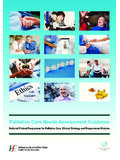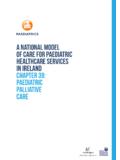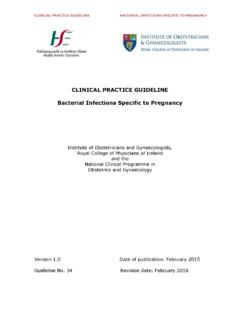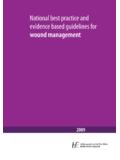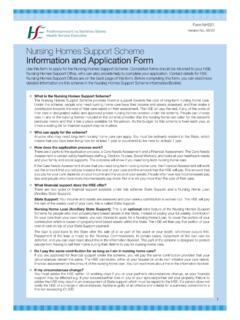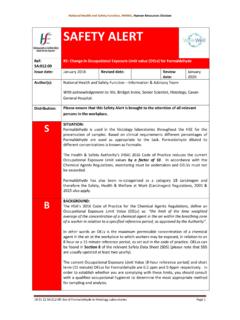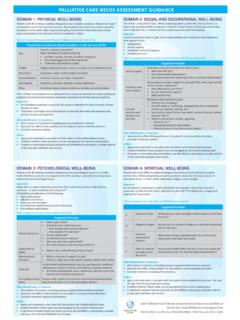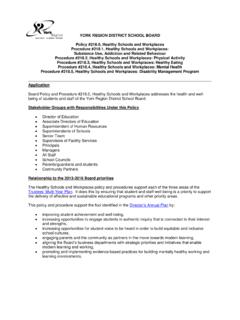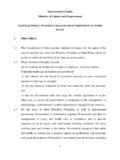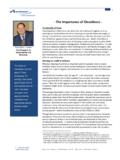Transcription of HR Guide to Creating a Positive Work Environment
1 Creating a Positive work Environment in our Health Services A Useful Guide for Staff, HR Practitioners and Line Managers October 2015 2 Foreword A Positive workplace can mean the difference between success and failure for an organisation. A good relationship among employees leads to improved teamwork and, in turn, to a more responsive client/patient-focused service. Led by Human Resources staff, a Positive Workplaces Strategy Group was instigated with input from relevant stakeholders including Occupational Health service, service managers and trade union representatives. The Guide produced by this group has looked at best practice in Creating a Positive workplace Environment at each of our locations.
2 It includes guidance to managers on minimising the potential for conflicts in the workplace, and on managing conflicts if and when they arise. The Guide emphasises the need for early intervention by line managers to prevent workplace conflicts escalating. The Guide does not replace existing policies and procedures such as Dignity at work , Trust in Care or the Grievance and Disciplinary procedures. Line managers and employees may still have recourse to these if required. However, the Guide , if used properly, will promote appropriate behaviour among employees that should facilitate a Positive workplace Environment . It should also allow inappropriate behaviour to be identified more promptly as a potential cause of conflict so that any necessary interventions can be made.
3 Creating a Positive workplace Environment and managing conflict at work if it should arise is an integral part of good people management. The principles and good practice outlined in this Guide is a useful aide to managers and employees of the HSE. Rosarii Mannion National Director Human Resources 3 TABLE OF CONTENTS Contents Foreword .. 2 Introduction .. 4 Management Standards .. 5 Management Standards for Addressing Workplace Stress .. 6 Conflict Management .. 6 Understanding conflict styles .. 9 Why intervene? .. 10 Dealing with 15 Use of Official Processes .. 18 Appropriate Referral of Cases to the Mediation Service .. 18 Participative Approach .. 20 Integrity .. 23 Conclusion .. 26 Useful Contact Number for Staff.
4 27 References: .. 27 Online References & Useful Links: .. 27 4 Introduction A Positive Workplace A high performing and committed workforce is critical to the delivery of Health and Social Care. In the current climate, it is important that all employees work collaboratively and effectively in a spirit of co-operation and mutual respect to maximise service delivery to the public. A Positive workplace exists when employees are fully engaged and willing to help their co-workers and when staff members, managers and employers openly recognise the talents and contributions each team member brings to the work Environment . A Positive workplace consists of employees who enjoy and are passionate about their work and who exhibit both personal and professional pride in the services they provide to their patients and clients.
5 Employees who look forward to coming to work each day and who interact with their co-workers in a collaborative and collegial manner create a Positive workplace. They are fully engaged with an enthusiastic approach to work and act on the belief that their working relationships have a Positive impact. Most people in the HSE work as part of a team and a Positive workplace culture is created when there is a common sense of purpose and pride in the team and all team members are treated with dignity and respect. In a Positive , motivating Environment employees feel free to give their best effort as they believe it will yield constructive results. Managers foster a Positive working Environment by engaging with their teams in a transparent and equitable manner, promoting a culture of involvement and consultation, in addition to recognising Positive contributions.
6 While a degree of challenge is inevitable where groups of people work together, and can be healthy in challenging us all about the way we operate; unresolved conflict and negative behaviours ultimately impact on the work 5 Environment , the health and wellbeing of the employees concerned as well as the quality of service delivery. Managers must be able to adapt their leadership to suit the demands of the situation and the people involved, maintaining ethical, personal and professional standards at all times. They should inspire others, leading by example, and maintaining a calm and controlled style across all situations, serving as a calming influence for staff when they encounter demanding situations.
7 Management Standards Managers should be seen to take responsibility for their own health, wellbeing and work -life balance and encourage their staff to do likewise. Going to work is generally good for us, but only if our health, safety and welfare are protected. Preventing ill-health and absence due to work -related stress is an important part of Creating a good working Environment for your staff. People can get confused about the difference between pressure and stress . We all experience pressure regularly and it can motivate us to perform at our best. It is when we experience too much pressure and feel unable to cope that stress can result. Managers at all levels of the Organisation should be aware of the Management Standards for tackling Workplace Stress, to help them manage the causes of work -related stress.
8 The Standards refer to Six areas of work that can lead to stress if not properly managed. 6 Management Standards for Addressing Workplace Stress Demands: This includes issues such as workload, work patterns and the work Environment . Control: How much say the person has in the way they do their work . Support: this includes the encouragement, sponsorship and resources provided by the organisation, line management and colleagues. Relationships: This includes promoting Positive working to avoid conflict and dealing with unacceptable behaviour. Role: Whether people understand their role or within the organisation and whether the organisation ensures that they do not have conflicting roles. Change: How organisational change (large or small) is managed and communicated in the organisation.
9 Managers are responsible for carrying out psychosocial risk assessments at regular intervals (at least annually) and reviewing them particularly in times of significant change in the work area. Advice in relation to these assessments is available from the local Occupational health department. Supporting staff is a key organisational objective. Within each service area is a dedicated Employee Assistance Programme or Service designed to assist and support staff through a number of measures. The contact details for this service are contained on Page of this Guide . Conflict Management Conflict is an inherent part of the employment relationship. Modern organisations are dynamic and complex, made up of people with increasingly diverse backgrounds, opinions, values and expectations about work .
10 Cross signals leading to misunderstandings, disagreements and ultimately conflicts may be due to perceptive differences, in the way that individuals see the world. 7 The continuous change experienced in the Health Service with an ever increasing pressure to deliver quality services to our clients, can also lead to increased conflict. Managers are tasked to provide a challenging, developmental and supportive work Environment , which respects the dignity of all. A certain degree of healthy conflict, for example, fair competition between individuals to excel in their roles, can be a good thing and can help to create innovation within teams. However, tension can lead to discord and start to create negative conflict.
